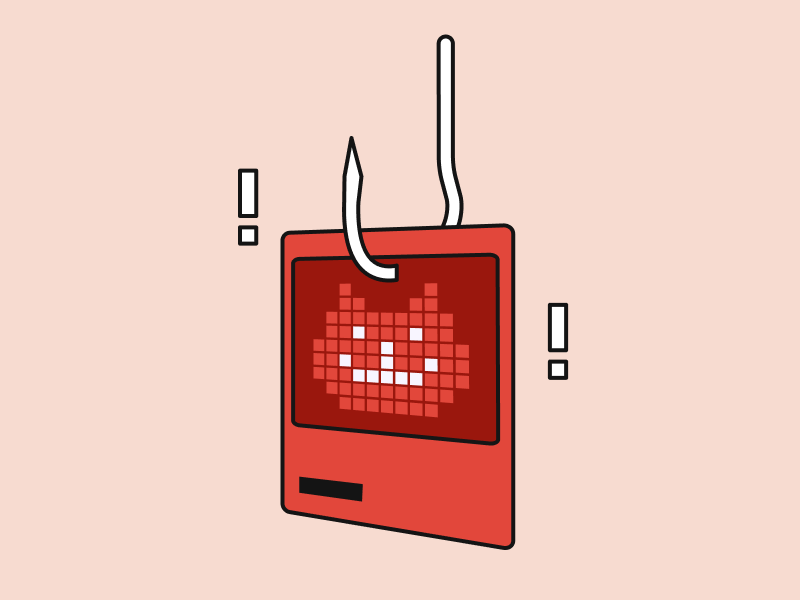NFT Scams – How They Work and How to Avoid Them

NFT sales with the Mystery Box concept are common in new NFT project launches. This concept appeals to buyers who like surprises and exclusivity. Buyers may get rare or even super rare NFTs! However, there is a risk of getting an NFT that doesn’t meet expectations, which could be a sign of a scam. This article explores various scams in the NFT realm and offers tips on how to avoid them.
Article Summary
- ☠️ You should be aware of various NFT scams such as rug pulls, fake marketplaces, fraudulent NFT collection offers, and NFT airdrop scams.
- 🖼️ Examples of scams in NFT projects include Big Daddy Ape Club, Pixelmoon, and Iconics NFT.
- 🪜 To avoid scams in NFT, it’s essential to conduct thorough research, verify the identity of creator, use reputable platforms, be cautious of overly tempting offers, and stay vigilant by keeping up with alerts and updates.
NFT Scams
In recent years, NFTs have taken center stage in crypto digital art market. However, behind the huge potential and innovation they offer, NFTs have also become a fertile ground for different types of scams that harm investors and collectors. From rug pulls to fake marketplaces, NFT scams have various modes designed to trick and deceive users.
As an NFT investor or collector, you need to understand the types of scams that exist and the steps that can be taken to avoid unexpected losses. Here are the types of scams in the NFT world that you need to know:
1. Rug Pull
A “rug pull” scam is a form of fraud in decentralized finance (DeFi) and NFT projects. Rug pull scams occur when the creator suddenly withdraws all liquidity and assets and then abandons the project. As a result, investors are left with worthless tokens or artwork, often resulting in substantial financial losses.
The practice of rug pulls in the NFT world occurs when scammers create NFT collection projects and attract potential investors with promises of high profits or valuable NFT assets. They often exaggerate potential profits and emphasize the token’s rarity or uniqueness.
To attract investors, scammers encourage users to provide liquidity or buy their tokens to create legitimacy and liquidity in the project. Once all the NFTs are successfully sold at a high price, the scammers suddenly disappear and pull liquidity from the project pool. They then sell their tokens, abandoning the project’s development completely.
2. Fake NFT Marketplaces
A fake NFT marketplace usually refers to a website or platform that mimics the appearance and functionality of an official and well-known marketplace. It aims to trick users into interacting with it.
These fake platforms are created with a website domain similar to the original NFT marketplace. The appearance and logo also look similar to fool users.
These marketplaces sell non-existent products, collect payments without delivering the goods, or steal users’ personal and financial information. When you buy NFTs on these platforms, you might end up with fake NFTs or even nothing.
3. NFT Bidding Scam
This type of scam utilizes the bidding process in the NFT marketplace. It aims to deceive NFT buyers, collectors, or investors during the bidding or auction process to acquire NFTs.
Here are some activities that can be conducted during the NFT bidding process:
- Bid Manipulation: Scammers use multiple accounts to raise the bidding price of NFTs. They trick potential buyers into thinking that the price of the NFT is higher than it is.
- Phishing Scam: Scammers lure bidders to fraudulent bidding sites using phishing links. They try to steal users’ personal information and assets.
- Fake NFTs: Sellers may deceive potential buyers by falsely claiming that their NFTs are rare, even if they are fake. This deception can lead buyers to pay higher prices due to misconceptions about the NFT’s rarity.
4. NFT Airdrop
Airdrop scams are fraudulent schemes that take advantage of the high interest in NFTs to trick individuals into providing personal information or remitting crypto assets with the promise of receiving free NFTs. Scammers often pose as popular NFT projects, artists, or celebrities on social media platforms, claiming they hold a legitimate NFT airdrop or giveaway event.
They use fake accounts or websites that look official. Victims are redirected to fake websites resembling legitimate NFT marketplaces or social media profiles. These websites ask users to provide personal information, such as e-mail addresses, wallet addresses, or private keys.
Scammers may instruct victims to send a certain amount of crypto to a specific wallet address and claim that doing so is a prerequisite for receiving free NFTs. However, users never receive the promised NFTs after providing information and sending crypto.
Examples of NFT Project Scams
1. Big Daddy Ape Club

Big Daddy Ape Club is an NFT project planned to mint 2,222 NFTs on the Solana blockchain and sell them on the Solanart marketplace. However, after raising $1.3 million from investors to develop the project, the developer suddenly disappeared and did not deliver NFTs to investors.
This rug pull scam caused tremendous disappointment, especially since the project had passed the verification by the decentralized identification company, Civic. In early January 2022, Civic’s CEO, Chris Hart, worked with law enforcement to pursue the scam’s perpetrators.
2. Pixelmon

While not categorized as an NFT scam, this project has failed to meet the expectations of its community. Pixelmoon is an NFT project that envisioned an adventure game featuring low-resolution pixel art reminiscent of Pokemon-style Minecraft. The project comprised 10,005 pixel character NFTs. NFT Pixelmoon was launched on February 7, 2022, and unveiled on February 16, 2022.
With a team that boasts experience from prominent companies like Disney and Activision, expectations for the project were high. Nevertheless, concerns started to surface when 8,079 NFTs were sold within an hour at 3 ETH each, while details regarding the team’s identity and NFT art remained undisclosed.
After the art was unveiled, many collectors were disappointed as it did not meet their expectations. To compound matters, there were allegations of project funds being misappropriated for purchasing blue-chip NFTs. Consequently, the launch of this NFT project was deemed unsuccessful.
Despite this, the development team continued to develop the project and some of Pixelmoon’s NFTs still have high value. Pixelmoon is currently available on Blur with a floor price of 1.5 ETH.
3. Iconics NFT

The NFT Iconics project on the Solana blockchain disappointed investors with a rug pull-type scam. A 17-year-old artist behind the project is estimated to have made around $140,000 before disappearing.
After showing the first 14 samples on its Discord channel, the project launched a pre-sale NFT on September 30, 2021. A total of 2,000 NFTs were sold at 0.5 SOL per piece.
However, following the release, investors did not receive the promised artwork; instead, they found a collection of random emojis in their wallets. Subsequently, the project’s Twitter and Discord accounts became inactive.
How to Avoid Scams in NFT
Avoiding NFT scams requires thorough research before proceeding. Here are several steps that can be taken to steer clear of scams in the NFT realm:
- Do Research: Research NFT projects thoroughly before investing. Check the development team’s background, reputation, and previous project history.
- Verify Identity: Ensure that the developer of the NFT project is not anonymous. A verified identity can provide additional confidence in the project’s reliability.
- Use a Trusted Platform: Transact NFTs through a trusted and well-established platform. Avoid platforms that are new or have a bad reputation.
- Beware of Offers That Are Too Good: If an offer looks too good to be true, it probably is. Avoid putting too much faith in promises of huge profits without risk.
- Stay vigilant for alerts and updates: Keep yourself informed about the latest news and advancements in the NFT space. Trusted crypto news communities or sources frequently issue warnings regarding scams.
Conclusion
Although the NFT world provides the security of blockchain technology, the responsibility for security rests with investors. Scams within the NFT sphere include rug pulls, fake marketplaces, and deceptive NFT collection offers.
By identifying potential NFT scams, you can safeguard yourself from making poor investments. It is crucial to stay vigilant and conduct thorough research on any NFT project you intend to purchase.
References
- Eric James Bayer, The Biggest Rug Pulls in NFT History, NFT Now, accessed 8 March 2024.
- Abdulsamad Yusuf, NFT Scams And How To Avoid Them, Linkedin, accessed 8 March 2024.
- Sergeu Khitrov, The Biggest NFT Rug Pulls in History: How to Identify Crypto Scams, Hackernoon, accessed 8 March 2024.
Share


